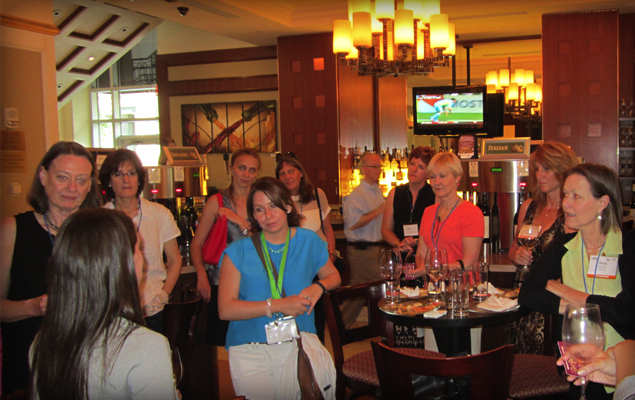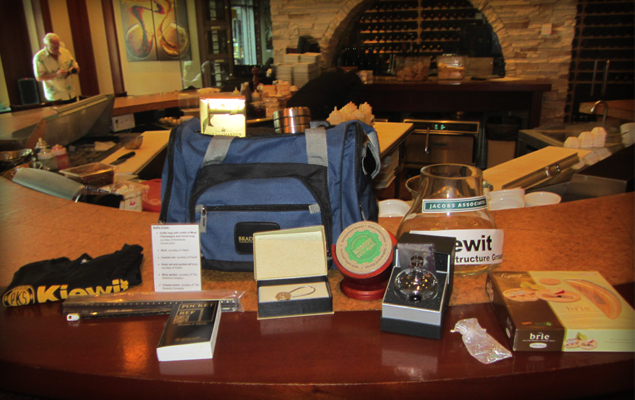Author: Robbins
Lessons learned from construction of the 62km Emisor Oriente Tunnel in Mexico's challenging and varied ground
In April 2009, tunnel boring started on the Tunnel Emisor Oriente (TEO) sewer project after decades of deliberation. The infrastructure will replace an open, untreated canal that conveys wastewater from Mexico City. The new tunnel will end at the capital’s first wastewater treatment plant and reduce the risk of catastrophic flooding in downtown Mexico City. It was this risk that led President Felipe Calderon to label the project a “National Emergency”. The TEO project was designed as a 62 km pipeline of 8.9 m diameter with a primary precast concrete segmental lining and a secondary in-situ concrete lining. 24 shafts up to 150 m deep support six TBM operations totaling about 10 km each. After five years of work, 34% of the bore is complete, and the owner of the project, CONAGUA, is rethinking their strategy based on incredibly difficult ground. This paper will discuss the new strategy from both the contractor and manufacturer perspective, including successful TBM modifications.
Raising EPB Performance in Metro-Sized Machines
Singapore is employing more than 29 earth pressure balance machines (EPBMs) to excavate a single 21 km metro line, Downtown Line 3. Moscow is adding 50 km of new metro line by 2016, 150 km by 2020. China will expand their metro lines tenfold by 2050 to more than 11,700 km. China’s plans for the next two years require 250 EPBMs. With such extensive global metro expansion plans, increasing EPBM performance would have a monumentally positive economic impact, with tunnels being excavated in less time and at lower cost. EPBMs on several projects have recently set performance records. In this paper, the authors examine these and other projects, searching for clues as to why some EPBMs perform at higher rates than others and attempt to determine which causes are in the control of contractors, which in control of the machine designers and how one might replicate high performance on future projects.
Achieving Fast EPB Advance in Mixed Ground: A Study of Contributing Factors
Earth Pressure Balance (EPB) tunneling in mixed ground conditions is a challenging prospect, as it often includes excavation in boulder fields, sections of rock, and/or sticky clay, under high water pressure or changing water pressure. Maintaining a rapid advance rate in such conditions is a function of many factors—from adequate cutting tools to cutterhead design, pre-planning and execution of an appropriate ground conditioning regime as well as proper maintenance and operation of the TBM. This paper will analyze recent record-breaking and high-performing projects seeking to identify factors that contribute to fast machine advance. These factors will then be discussed and an effort made to form simple, high level guidelines for optimal TBM excavation in mixed ground conditions.
Rock Tunneling Machines: Options and Methods for Variable Geology
Modern tunnel boring machines come in a variety of designs that use different excavation methods to address a wide variation of geology seen during tunneling operations. Invariably tunnels of any length run into varying geology, some of which will fall outside the traditional range of any one machine type. On projects where the majority of the drive is rock with a short percentage of a softer formation, selection of a hard rock machine with maximized advance rates, minimized operating cost and wear would be desirable. However, when there are concerns associated with risks of the machine getting stuck, of high water inflow and of subsidence in soft ground, the contractor may be driven towards the choice of a soft ground machine. This paper will review the additional features and ground treatment options that could expand the spectrum of projects benefitting from a hard rock type machine, even when sections of soft ground are present.
Logistics of Limited Space Urban Tunnelling at Singapore’s Mega Metro
Today’s mega metro projects are using multiple TBMs in difficult ground, short tunnels, and in urban settings: Factors that create unique challenges. At Singapore’s metro construction, 21 km of tunnel for the Downtown Line 3 are underway using 29 TBMs boring between 16 station sites in short bores often less than 1.5 km each. By 2017, 39 km of new construction will cut commute times in half in one of the world’s most densely populated locales.
This paper will detail six earth pressure balance machines on the project, analyzing the challenges of boring in a highly urban setting through rock and soft ground under water pressure. Machine performance at the Singapore Downtown Line will be analyzed with a discussion of the challenges involved.
The Greatest Challenges in TBM Tunneling: Experiences from the Field
TBM tunneling is an ever-increasing prospect for underground construction, and with each new tunnel bored there are unknown elements. When boring through the earth, even extensive Geotechnical Baseline Reports can miss fault lines, water inflows, squeezing ground, rock bursting, and other types of extreme conditions. This paper will draw on the considerable field service experience within Robbins to analyze successful methods of dealing with the most challenging conditions encountered.
Robbins Small Boring Units: A Closer Look at the SBU-M
Learn more about the Robbins Motorized Small Boring Unit (SBU-M) in this 3D animation. With continuous steering capabilities and an in-shield drive motor, the SBU-M can make the grade on long gravity sewers and other line and grade sensitive utility tunnels.
What is WIT, and Why Does it Matter?
“If going underground suits you, you are immediately hooked”; “Once I was exposed to the underground industry, I loved it”; “I fell in love with tunnel construction, and never left”. All of these statements came straight from women working in tunneling who were interviewed by TunnelTalk at NAT 2012. If tunneling is such a satisfying career path for women, why are so few females working in tunneling?
The lack of women may be attributed to lack of industry exposure and the male centricity of the field, Since its establishment, tunneling and underground construction has been primarily male-dominated. In recent years, the number of lady tunnelers has grown, and the need arose for a group to support this demographic. Women in Tunneling (WIT) was created by women for women with the purpose of providing networking opportunities to women from all corners of the tunneling world, and spreading the message of the exciting opportunities that accompany a career in the field.
The inaugural WIT networking event was hosted in conjunction with NAT 2012 in Indianapolis, IN, and took place at a popular Indy wine bar. Architects, consultants, editors, engineers, marketers, and writers were among the 27 attendees. Highlights of the two-hour event included a constructive roundtable discussion and a raffle with sponsor-supplied gifts.
All guests were excited about the future of the group, and eager to get additional women involved. The hope is to spread the word about WIT, and double the amount of attendees at the next event. Eventually, WIT would like to have events during all major North American trade shows. Interest internationally has been shown as well, and WIT looks forward to possibly expanding overseas.
WIT is not affiliated with any one company; it is an industry-supported group that aspires to grow the number of women in tunneling through networking and increased industry exposure. The group’s first event was hosted by The Robbins Company, and was entirely paid for by the generosity of sponsors Kiewit, Jacobs Associates, Arup and Bradshaw Construction Corporation.
As Natasha Taylor, one of the TunnelTalk interviewees and a civil engineer at Kiewit, said, “There are all the opportunities in the world [for women in the underground industry]”. Our market is thriving and there are countless possibilities for women who want a career in a challenging and dynamic business. We hope you’ll join us in supporting WIT, and the group’s goals of bringing women together and attracting additional women to the industry.
If you’d like to get involved with WIT and receive group updates, please join our LinkedIn group. To watch the videos referenced in this blog, visit the TunnelTalk YouTube channel.
SBUs in Action: Mixed Ground SBU-M in Pennsylvania
View a Robbins Motorized Small Boring Unit (SBU-M) successfully excavating mixed ground conditions in Clairton, Pennsylvania for contractor Capitol Tunneling, Inc.
Robbins EPBs in Action: Chengdu Metro
Soft clay soil, an array of boulders, and sharp turns have each added an extra layer of difficulty on the Chengdu Metro Line 2 project. Custom-engineered with active articulation systems, the two Robbins 6.3m EPBs have been carving their paths at speeds up to 180 meters per week.
Recent Posts
- Overcoming Mountainous Geology at Nepal's Sunkoshi Marin Project
- Unprecedented Diameter Change: The Mill Creek Tunnel
- Mine Development Machine: Successful Rectangular Rock Bore in Fresnillo, Mexico
- Encountering Caverns in France: TBM Tunneling in Karst Conditions
- 48 Fault Zones and 26 Bar Pressure: Boring Turkey's Gerede Water Transmission Tunnel

 Close
Close  Menu
Menu 

